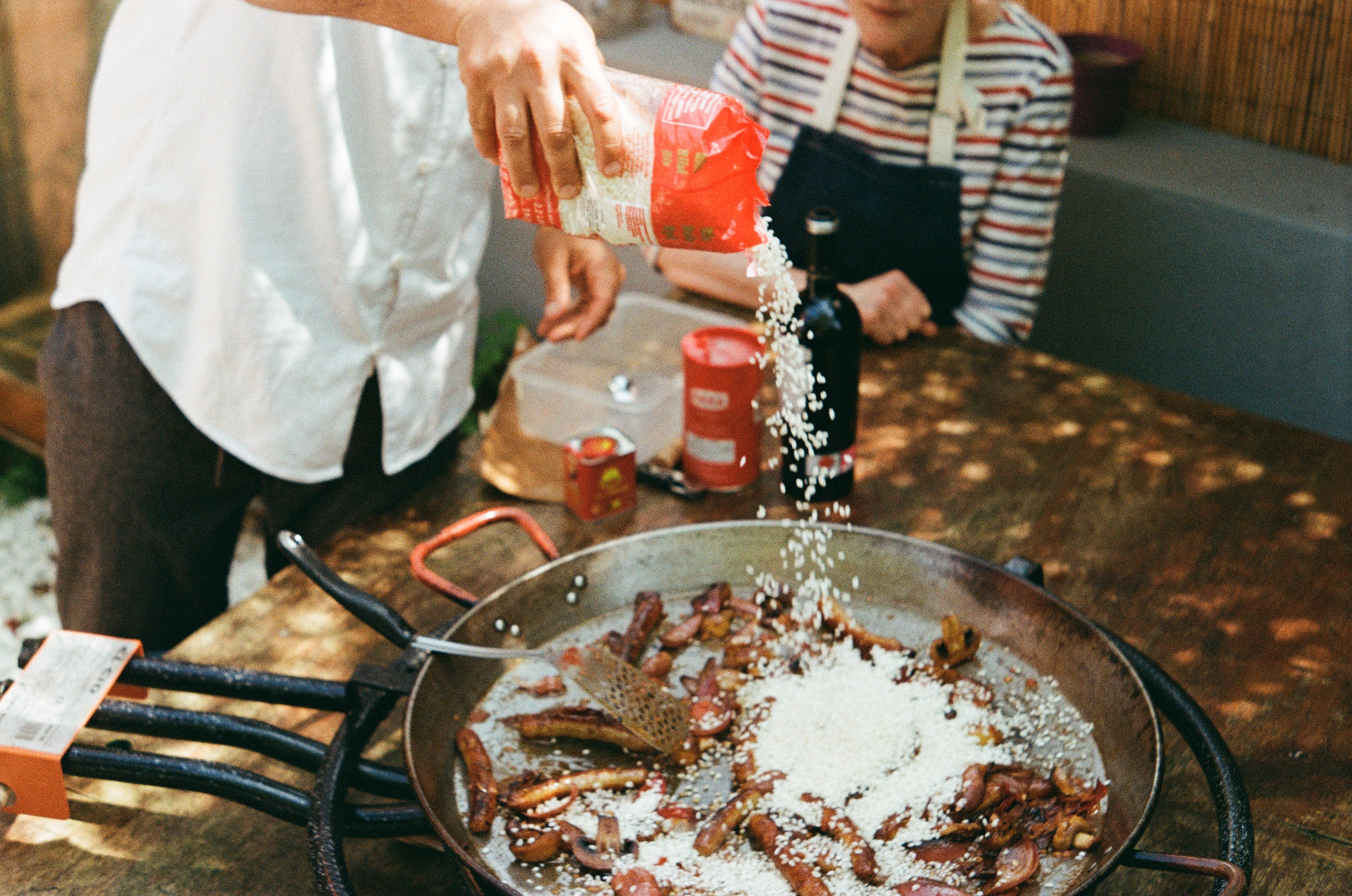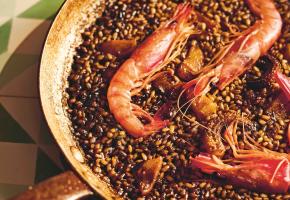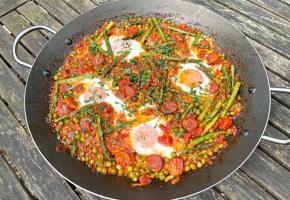Think back to a simpler time when Jamie Oliver was busy taking down Turkey Twizzlers: the corkscrew-shaped meat snack making kids fat. When cooking at home was as simple as slapping stuff together in thirty minutes or less. When, inspired by what we saw on our flatscreens, we dared to pour extra virgin olive oil over salads with the bravado of a matador, hoping our consumption of a Mediterranean-inspired diet might increase our life expectancy.
Fast forward to the year 2011. Foreign foods like chorizo and humus were starting to feature in the deli aisles of supermarket chains up and down the country. Small plates were still only plates that were small, i.e. starter plates (this was before a wave of tapas-style restaurant menus would usher in today’s ‘small plates’ era of dining out). It was in this context, in the central well of Shepherd’s
Bush’s Westfield–London’s first mega mall–that a slick little eatery called Tapas Revolution was unleashed upon hungry shoppers. Legs of Iberian ham hung above an oval-shaped bar where you could have a glass of vino and some padrón peppers beside a set of escalators that led skyward to a Vue multiplex. Depending on which side of the bar you were sitting on, your view would have been of an Apple Store or a Hollister. The new tapas bar was opened by Madrid-born chef Omar Allibhoy, who had cut his teeth on the five-time best restaurant in the world, el Bulli, in rural Catalonia, before moving to the UK, where Gordon Ramsay would declare him the “Antonio Banderas of cooking”.
For the best part of the last two decades, Omar Allibhoy has been sharing Spanish recipes with the British public as a restaurateur, TV chef, and YouTuber. He has been making the point that although Brits might enjoy Spanish food on holiday in Marbella, they’re reluctant to cook it back home. But it’s simple to recreate once you’ve actually been shown how it’s made, Omar told me.
Now, you can join the Spaniard in his north London home for a five-hour cooking class, where he’ll teach you how to make a family-style banquet starring a paella cooked outdoors–the way it’s meant to be done (or at least the way I’ve seen them do it in the Masterchef España paella challenge). On a sunny Saturday morning in June I took the tube to Dollis Hill, a short walk from Omar’s house.

Omar’s made-to-measure kitchen is enviable. Soft-close hinges have been installed in the cupboards and drawers, making it impossible to slam a door. The gas hob’s burners are controlled by a touchpad instead of knobs you have to push down and turn. Sunlight pours through the windows wedged between the wooden slacks of the slanted roof: a reminder of this town house’s Victorian bones.
Omar and his assistant had laid out four handouts, chopping boards, and Japanese knives around the perimeter of the kitchen island. The other three participants were swooning English ladies who had come to know Omar through his weekend morning television appearances. Omar is a vivacious and spirited continental man with serious knife skills; it’s hardly difficult to understand how he’s amassed a loyal set of fans who feel as if they already know him. Over a coffee, we all got to talking: I found out that a. Omar is Muslim Indian on his dad’s side of the family and b. one of my fellow cookers is the mother of a comic actress. Then, we tied up our aprons, picked up our knives, and started to chop.
Potatoes, egg, onion, olive oil, and salt are the five ingredients in Omar’s tortilla, or Spanish omelette. Some hyper traditional recipes, however, exclude the onion. In the Pedro Almodóvar film Parallel Mothers (2021), Penelope Cruz’s character, Janis, teaches the other mother, Ana, how to make a delicious-looking, albeit onion-less, tortilla. After washing the peeled potatoes, Janis turns to Ana and says, “Y lo más importante es como las cortas” (the most important thing is how you cut them). Janis then proceeds to slice thin rounds before it cuts to a close-up of the potatoes sizzling in abundant olive oil. The on-screen potato rounds seem about the same thickness as the 3mm slices specified by Omar’s recipe (with nearly 8 million views–it’s the most-watched tortilla recipe on the internet).
“Of course you should add onions!”, Omar insisted when I asked the controversial question. I agree. They make everything better, especially when fried. After a while they caramelise with the potatoes, releasing and exchanging their liquified sugars, and bringing a mild sweetness to the dish. Rather than browning the potatoes and onions in a frying pan, Omar suggests shoving them in the oven at 200 degrees Centigrade for half an hour or however long they take, turning them once. “Don’t be afraid of using lots of oil. You can reuse it 10-12 times,” Omar said as he let his hand slip with the tin of Sainsbury’s own brand olive oil.
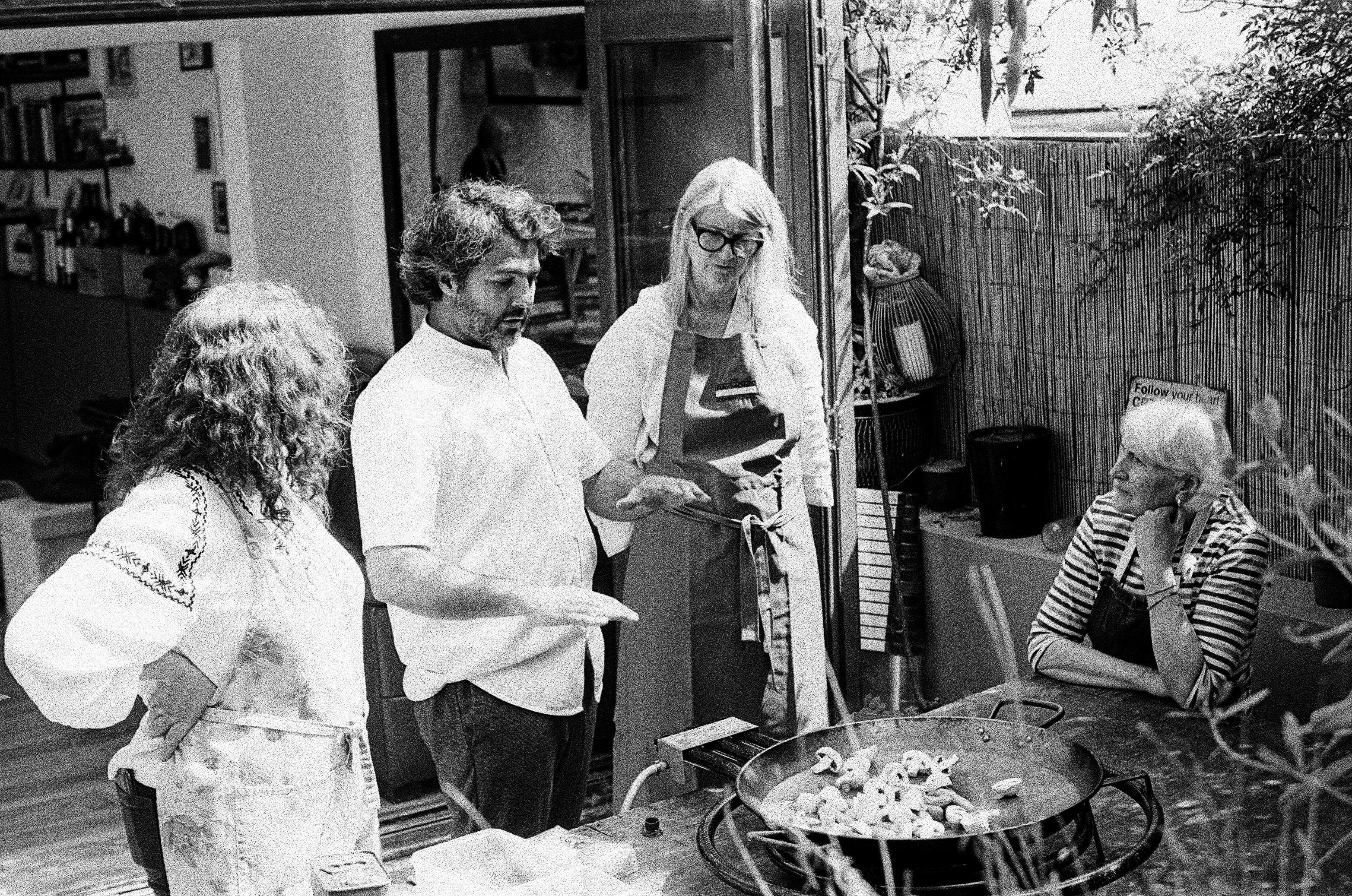
We took turns to cook our personal omelettes in a tiny frying pan that looked as if it had been manufactured by Fischer Price. Omar was patient and encouraging, supervising each of our tortillas and guiding us all through the crucial flip. But how do you know when it’s done? Much like a steak, you can press on the omelette’s surface with your fingers to feel how well the egg is cooked. I wanted mine jammy in the centre but I overcooked it by a minute or two.
There were six more recipes to get through, starting with dessert. Tocino de cielo (which translates as ‘heavenly bacon’) is an intensely sweet gelatinous pudding made by pouring a layer of caramel into a dish and topping it with an egg yolk mixture before baking it in the oven. Then, we left beef shin to stew with Pedro Ximénez while we butterflied trout fillets for the escabeche: a light and slightly sour pickled fish dish with julienned carrots and onions–covered in the fridge it can last up to three weeks.
Omar had ordered the trout from The Upper Scale, a London-based fish and seafood delivery service. Papas arrugadas (wrinkly potatoes) are exactly that. Similar to how bath water will dry out your toes, new potatoes are boiled in barely enough salt water to cover them, pulling out their moisture. They’re cooked until soft. Then, nearly all the excess water is drained from the pot and the potatoes are finished off on low heat until all of the water evaporates. After a few minutes the potatoes’ skin should be leathery and coated in a salt crust. These humble tatties remind Omar of his tía who used to live in the Canary Islands. In a food processor, we made a mojo verde (similar to an Indian coriander chutney) to serve with the potatoes. Before leaving the kitchen for the garden, Omar made the best aioli I have tasted in under twenty seconds (if you want the recipe get in touch).
I won’t lie. I was hoping for a seafood paella. I have nothing against sausages and mushrooms; they’re delicious, especially for breakfast… but they’re not the ingredients that spring to mind when you think of a paella. And that’s the point Omar is trying to make. Paella rices are versatile and will take on the flavours of any ingredient combinations you can think of (how about cheese and onion?). The rice he was using for the class was the packet of Arroz Cebolla you can see in the image below. I liked how round and glutinous the grains were. You can buy this rice and plenty of other Spanish pantry ingredients at accessible prices on Omar’s website–since parting ways with Tapas Revolution he has been exploring new opportunities and is looking to expand his small import/export business. After several rounds of applications and interviews with assistants and their assistants, Omar had secured a 40-minute one-on-one mentoring session with diarist and entrepreneur Steven Bartlett over Zoom.
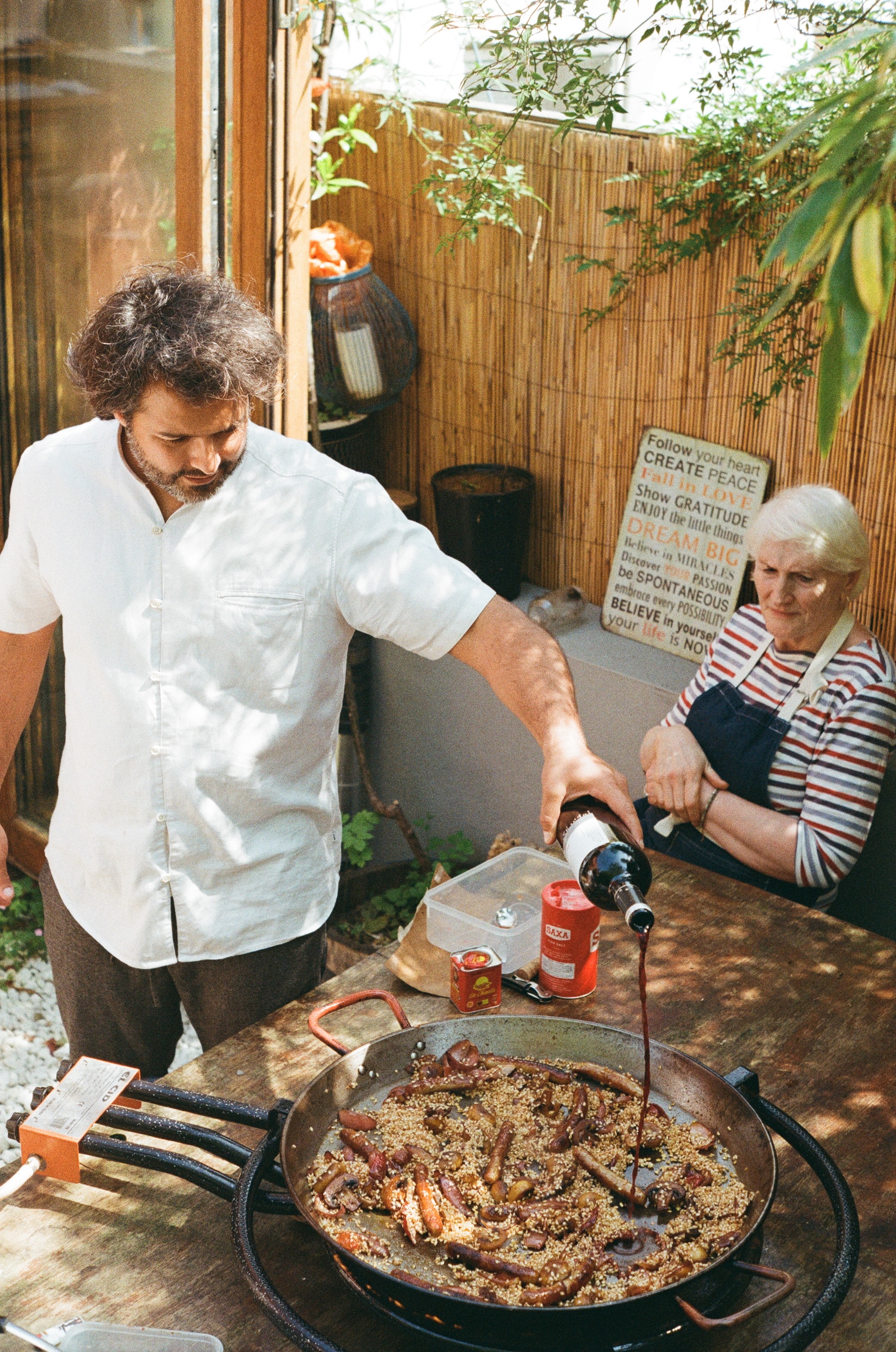
To cook a paella you need the right size paella (the pan you make a paella in) and paellera (the burner with concentric rings for different sized paellas). El Cid, the brand of paellera Omar owns, have been manufacturing paelleras in Valencia (the dish’s birthplace) since 1954, during Franco’s dictatorship.
Omar pulled ice cubes out of the freezer and poured everyone a refreshing glass of sangria. We laid out the food and started to eat the other dishes while the paella was cooling down outside. Even though I wasn’t hungry (cooking all day will have that effect on you) I think I could have eaten those wrinkly potatoes with aioli for the rest of my life.
Book your class https://www.thespanishchef.com/


